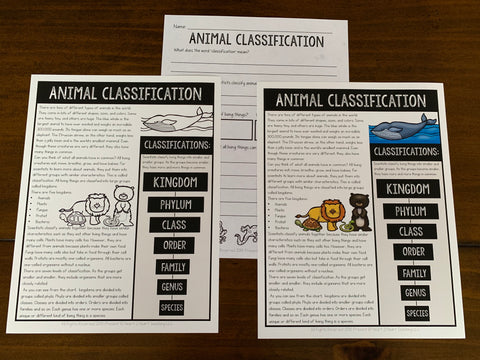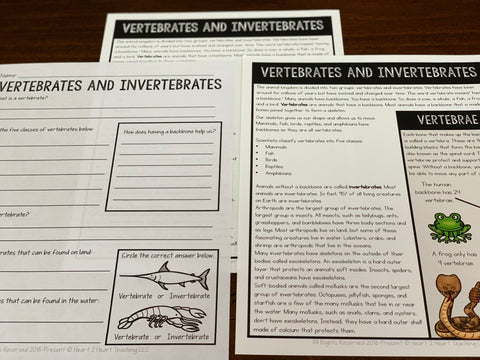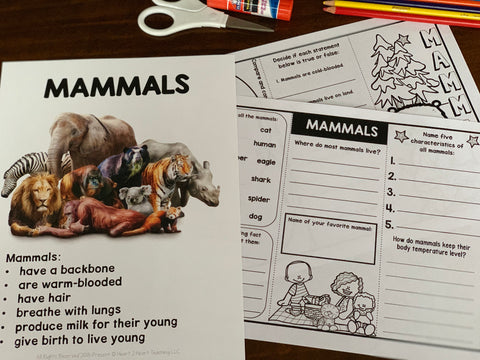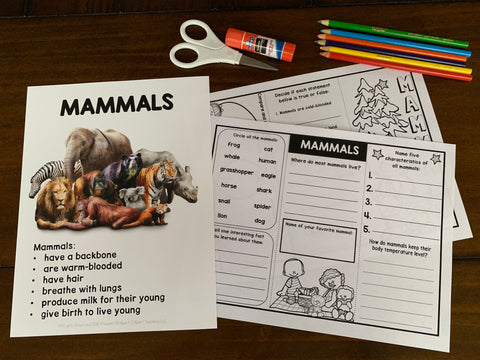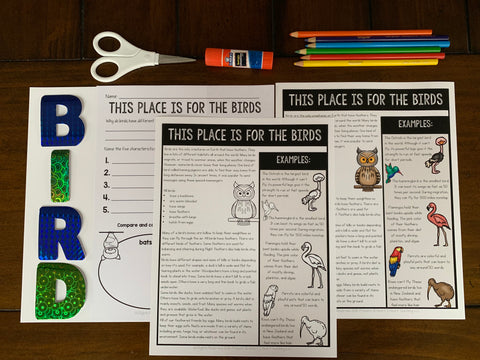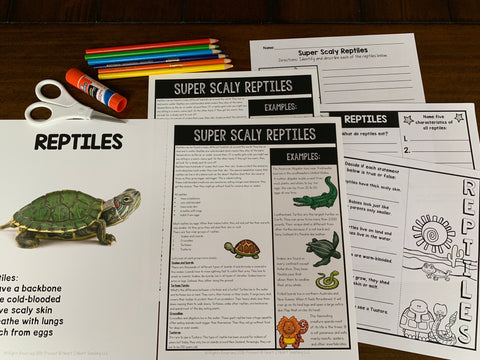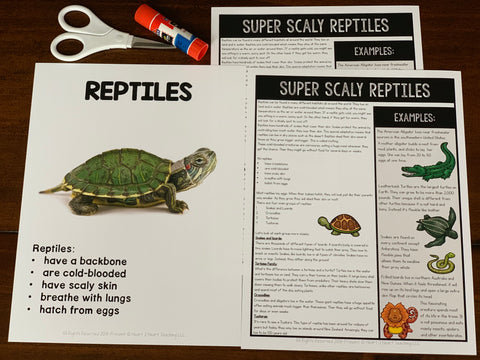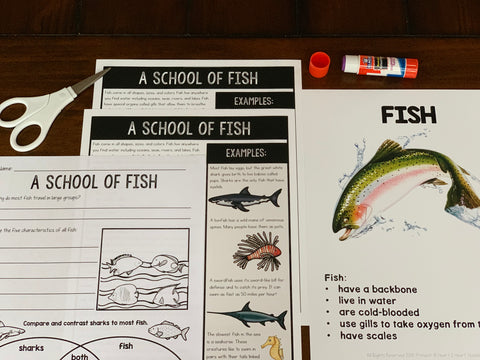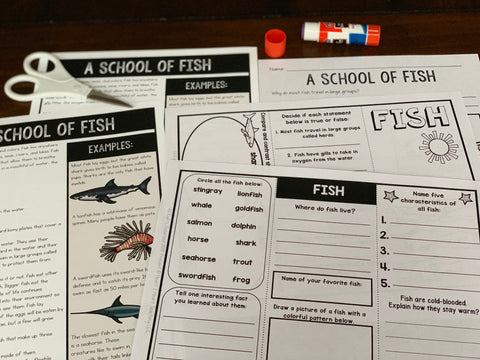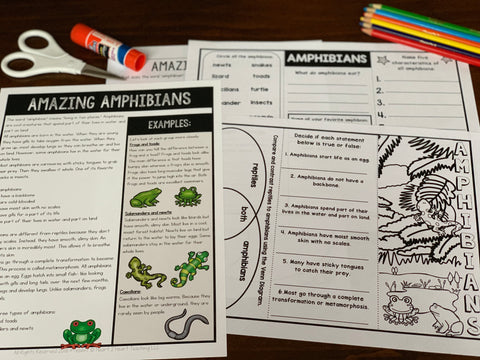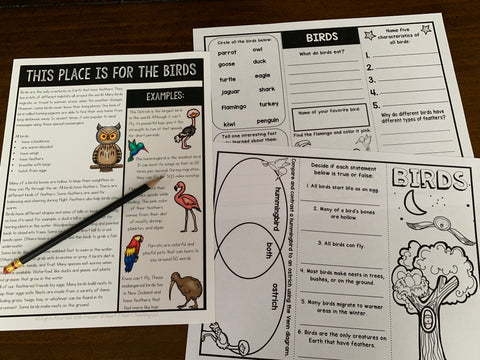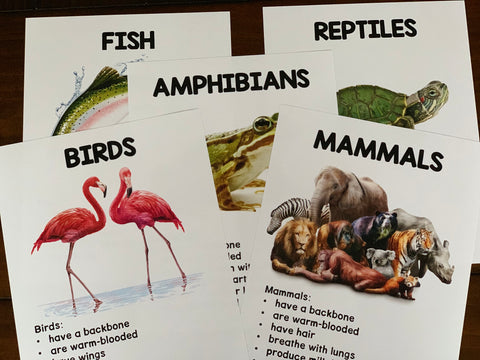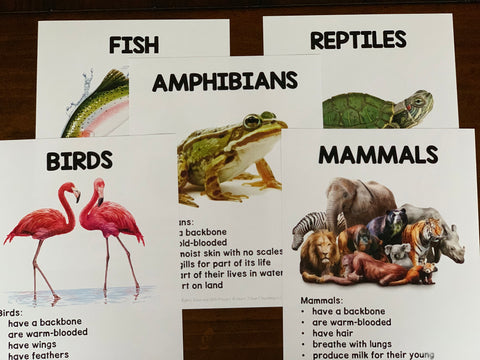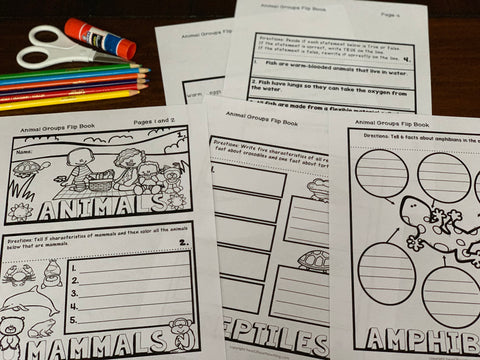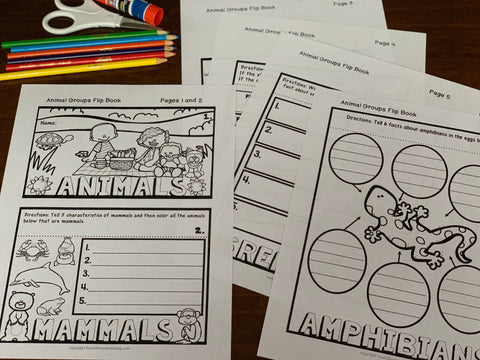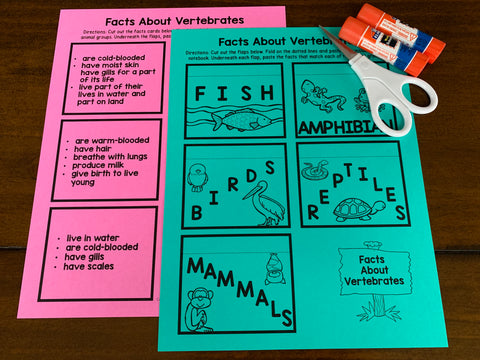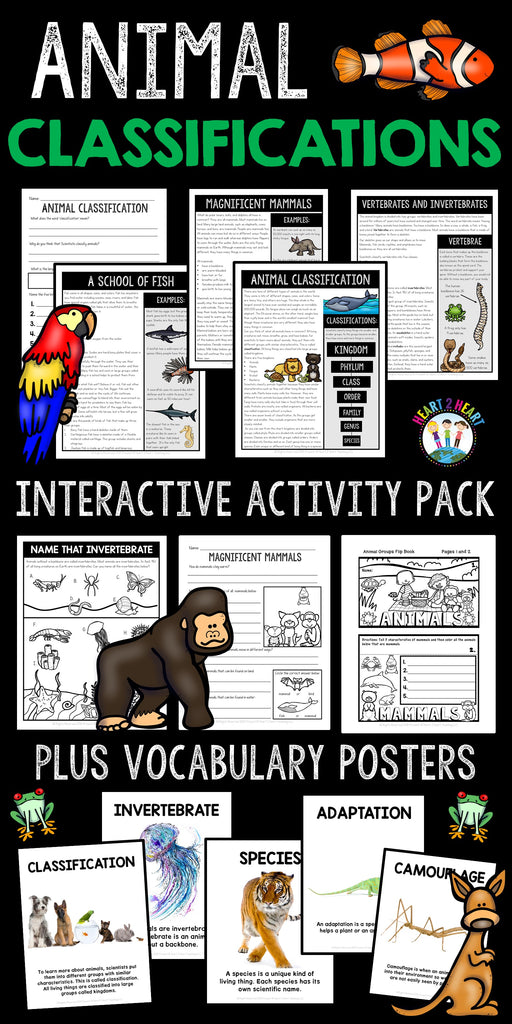Most children are fascinated with animals and we can build on that interest in the classroom.
Introduce the Unit
I like to start our animal classification unit by asking the class, what do all living things have in common? Remind students that people are animals too. As a class, we brainstorm a list.
All living creatures eat, move, breathe, grow, and have babies. For scientists to learn more about animals, they put them into different groups with similar characteristics. This is called classification.
The first passage in our unit introduces students to how scientist go about classifying animals and gives a brief introduction of each of the five groups.
Vertebrates and Invertebrates
After the introduction to classification, we move on to talk about the vertebrates and invertebrates. To demonstrate how our backbone helps us move, I have the students do the following movements:
- stand up
- touch their toes
- do a jumping jack
- pat themselves on the back
- feel the bones on the back of the neck
Pocket Sort
After reading the passage and answering the comprehension questions, we go on to do our pocket sort. This is a fun activity to reinforce their learning. Print the pockets on different colored paper.
Have students cut out the pockets and carefully paste the pockets (around the outside edges) into their notebook. Next, they can cut out the animal cards and sort them by whether they are vertebrates or invertebrates. Place the cards inside the correct pocket.
Then we dive deeper into each of the five animal groups. Each passage includes information about each group as well as examples.
The Five Big Groups
The following animal groups are highlighted in this unit:
⭐Mammals
⭐Birds
⭐Fish
⭐Reptiles
⭐Amphibians
For each of the five animal groups, there are reading passages, comprehension questions, and a tri-fold booklet. Students read the passage, answer the comprehension questions, and then complete the tri-fold booklet.
Mammals
I like to set up five learning stations, one for each animal group. Then students can rotate through each station.
Birds
Reading passages come in both color and black and white. You might want one copy in color to use at the learning station and then print off copies in black and white for the students to use.
Reptiles
Fish
Amphibians
Tri-fold Booklets
One of the student activities in this pack is the tri-fold booklets. These are double-sided booklets that after they are completed, look like a brochure.
To complete the tri-fold booklets:
- Copy booklet pages back to back.
- Have students answer the questions on both sides.
- Cut along the black lines.
- Color the front cover.
- Fold the flaps on the dotted line so that it looks like a brochure
Animal Characteristics Posters
Animal characteristics posters with real-life photos of animals are included for each of the five groups. These posters make a colorful and attractive bulletin board display in a snap!
Flip Books
There are several hands-on activities included in this unit to reinforce learning. For example, there is a 6-page flip book for the five groups. Students can work on one page each day and complete it in about a week. Flipbooks fit neatly into notebooks or can be designed as a stand-alone booklet.
Flip Fact Flaps
This is a fun and easy activity for students to complete as homework or for early finishers. Have students cut out the facts cards and paste them in a notebook. Next, they match up the flaps with the name of the correct animal group for each fact card. I like to print them on different colored papers and then students can pick a variety of colors for the different groups.
Animal Card Sort Game
There are three different ways to play this fun sorting game.
Classification Sort
- Print the animal classification cards #1-3 and name tags of each group on the next pages that follow. You won’t need the invertebrate cards for this activity. Cut into 24 cards and mix them together. (Laminate cards if desired.)
- This activity works well for centers, small groups, or partners.
- Ask students to group animal cards based on one property. For example, they make a group of animals based on the property of body covering. They might have animals that have fur and ones that have feathers. This will illustrate the concept of classification.
- Have students report to the class about how they have grouped their cards.
- Next, have students organize their cards in a different way and report back to the class. This will show them that there are many ways to group or classify, animals.
Vertebrates Sort
- Print the animal classification cards #1-3 and name tags of each group of vertebrates: mammals, birds, fish, reptiles, and amphibians. You won’t need the invertebrate cards for this activity. Cut into 24 cards and mix them together.
- Students pick one card at a time and sort them into the five groups of vertebrates: mammals, birds, fish, reptiles, and amphibians.
- Check their cards to make sure they are in the correct groups.
Vertebrate or Invertebrate?
- Print animal classification cards #1-5 and name tags for only vertebrates and invertebrates. You won’t need the other tags. Cut into 40 cards and mix them together. Cards #4 and #5 are all invertebrates.
- If this is too many cards for students to sort pick one sheet (8 cards) for each group.
- Have students sort the cards into two groups: vertebrates and invertebrates.
- Students will have to determine if the animals have a backbone or not. *Hints: have students look for animals have a soft body such as a jellyfish or octopus and animals that have an exoskeleton like insects.
Vocabulary Posters and Activities
This unit also includes vocabulary posters with real-life photos. There are flip flaps that are perfect for interactive notebooks and a spotlight on vocabulary activity to complete.
A quiz and answer keys are also included. Just print and teach!
Students will love learning all about animals with this fun and engaging resource. This unit includes reading passages, comprehension questions, tri-fold booklets, vocabulary posters, and activities for each of the five animal groups.
SEE IT IN MY SHOP BY CLICKING HERE!


